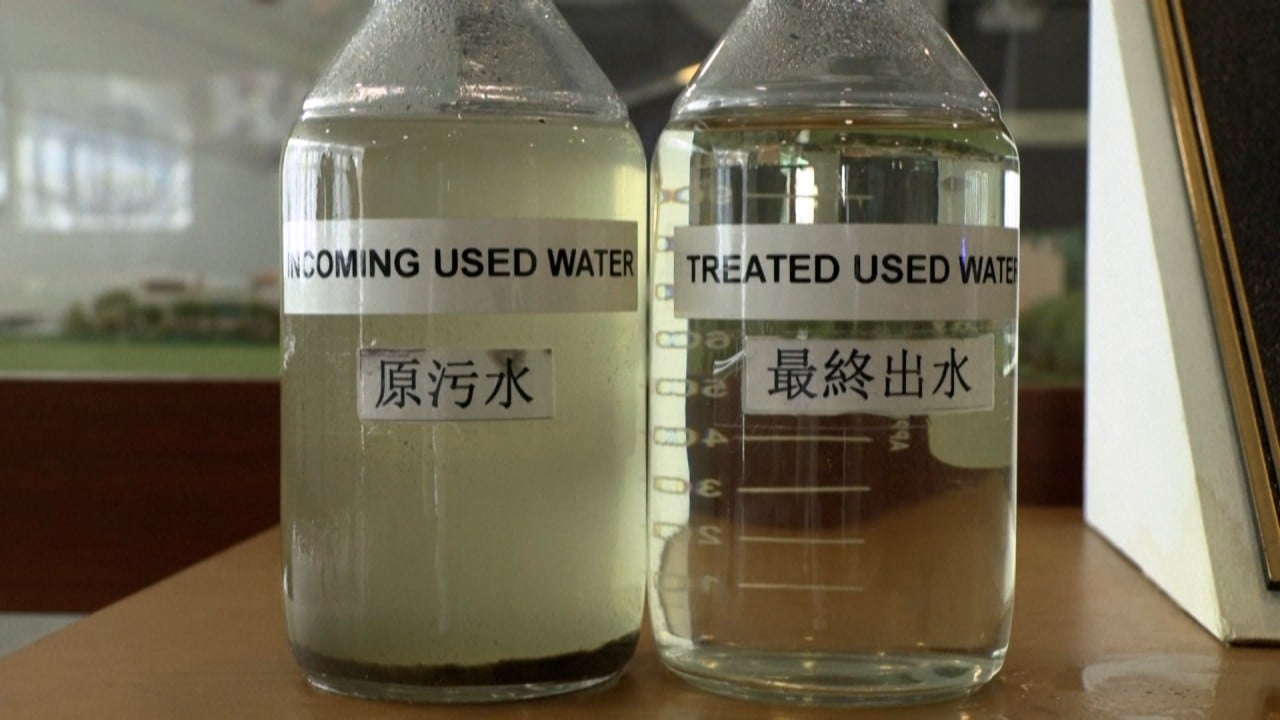
Drinking water at Hong Kong building found to contain elevated levels of lead
- Water Supplies Department reveals sample taken from private commercial building in Wan Chai exceeded city’s safety standards
- Testing finds 17 micrograms in water, higher than the permitted 10 micrograms
Drinking water at a commercial building in Wan Chai has been found to contain an excessive amount of lead, Hong Kong officials said on Wednesday.
The discovery, which was revealed by the Water Supplies Department, was the first since a government monitoring programme was launched four years ago. Authorities have refused to identify the private building concerned.
Announcing the weekly monitoring data for consumers’ taps under the Enhanced Water Quality Monitoring Programme, the department said that out of 15 samples, 17 micrograms of lead were found in one taken from the premises.
The sample was tested again 30 minutes later, and 12 micrograms of lead were found.
Hong Kong follows the World Health Organization’s standard, which caps the amount of lead in tap water at 10 micrograms per litre, more stringent than the 15 micrograms in the United States, or 50 micrograms in mainland China.

It is the first time authorities have found lead levels exceeding the allowed dosage since the government launched a comprehensive safety overhaul of the city’s drinking water in December 2017, after learning a bitter lesson from a contamination scandal in 2015.
“After the test results became available, the Water Supplies Department promptly contacted those responsible for the premises concerned and demanded that they tell all occupiers in the building and adopt appropriate preventive and mitigation measures, including using alternative drinking water sources such as distilled water,” a statement said.
It added the building management had also been asked to display notices in prominent locations, and employ a qualified consultant to conduct a detailed investigation to ascertain how the lead got into the water and how to stop it happening again.
Hong Kong subcontractors cleared of perjury in 2015 inquiry into lead-tainted water
The statement said the department would continue to monitor the progress of that work, and provide help if necessary.
Wan Chai District Council chairman Ivan Wong Wang-tai said the way the department had handled the issue was “totally unacceptable”, adding his request for more details was turned down.
“I was given to understand that the block in question is a commercial block with one restaurant there and that the water sample was not from the restaurant,” Wong said.
He added that the Home Affairs Department had not been told the name of the building either.
“Now all people know is one block in Wan Chai has a lead water problem, but no one knows which block, except for those working there. People need to know if they have visited the place recently and drunk the water there.”
A spokesman for the Water Supplies Department said it was not common practice to identify the premises involved in the programme, regardless of the test results.
Heritage buffs want remains of historic Pok Fu Lam aqueduct saved from ruin
The department said that as the monitoring programme was voluntary, it needed to strike an appropriate balance between respecting the privacy of the people involved in the participating premises and the public’s right to know.
It said it feared making public the information could discourage the premises from taking part in the programme. “Unless a relevant case could pose a threat to public health, or unless we secure the consent of the relevant [landlord, occupant, or registered user], we will not identify the participating parties or make public the detailed information of the premises [with unsatisfactory test results],” the department said.
Since December 2017, the department has collected samples of drinking water from consumers’ taps in randomly selected premises for testing for six metals – lead, nickel, chromium, cadmium, copper and antimony – which could be present in internal plumbing systems.
Since May, the samples have also been tested for residual chlorine and E coli.
Private and public housing flats, as well as businesses, are monitored and results published weekly on the department’s website.

02:16
Singapore plans to use recycled sewage to meet 40 per cent of water demand
Subsequent government tests found excess lead in dozens of water samples drawn from 11 public housing estates across Hong Kong.
Of the 5,655 voluntary blood tests provided by the government for residents in the wake of the scandal, 165 people were found to have mildly elevated levels of lead in their blood.
The department’s website said if drinking water was contaminated, alternative sources, such as distilled water or the supply from a certified filter should be used for more vulnerable groups, such as children aged below six, pregnant women and lactating mothers, for maximum protection.
According to the Centre for Health Protection, lead is a naturally occurring heavy metal which usually presents in a very small quantity in the environment and can enter the body mainly through the nose and mouth.
When lead is absorbed into the body in excessive amounts, it is toxic to many organs and systems. Exposure to high doses can cause abdominal pain and vomiting.


